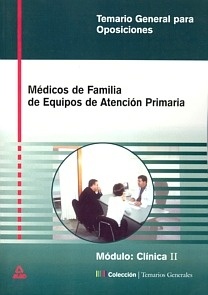Reseña o resumen
Exercise and Cancer Recovery provides specific guidelines for cancer exercise intervention and is full of leading-edge information on how exercise rehabilitation can help cancer patients deal with treatment-related symptoms both during and after treatment.
The authors, all of whom have extensive experience working in exercise with cancer patients, provide a valuable overview of the etiology and effects of cancer. They also show you step-by-step how to adapt normal assessment and prescription procedures to each client's cancer history and current condition.
Whether you work with cancer patients in clinical or applied settings, this book will teach you how to adjust exercise according to the ups and downs of treatment and its side effects. It also shows how to use exercise to strengthen the body and lessen fatigue rather than depress the immune system. You'll gain new insight into what clients are experiencing and how to communicate effectively with their physicians.
The text contains these features that will enhance your understanding of the material:
Numerous real-life examples (in both technical and human terms) illustrating how to respond to the changing conditions of clients
11 reproducible forms for collecting assessment data to convey vital information to clients, track clients' progress, record prescriptions, note unique problems and solutions, obtain informed consent, and more
Discussion of cancer pathology and treatment
Photos and written descriptions clarifying how to do all the exercises presented in the text
With Exercise and Cancer Recovery, you will have the tools you need to effectively apply exercise interventions to your patients or clients who are affected by cancer and to improve the quality of each one's life.
Table of Contents
Preface
Chapter 1. An Overview of Cancer Pathology
What Is Cancer?
International Cancer Statistics
How Cancer Develops
Types of Cancer
Grading and Staging of Tumors
Summary
References
Chapter 2. Cancer Treatment Toxicity on Physiological Systems and the Benefits of Exercise
Cancer Treatments
Cancer Treatment-Related Side Effects
A Closer Look at Some Common Symptoms
Summary
References
Chapter 3. Fundamentals of Exercise
Physiological Adaptations to Exercise
Basic Principles of Exercise Prescription
Summary
References
Chapter 4. Research and Basic Guidelines for Cancer Exercise Rehabilitation
Studies on Exercise Benefits for Cancer Patients
Developing Exercise Guidelines for Cancer Patients
Some General Research-Based Guidelines
RMCRI Guidelines for Prescriptive Exercise in Cancer Patients
Summary
References
Chapter 5. Health and Fitness Assessment for Cancer Patients
Principles of Effective Assessment
Pre-Assessment Procedures
Assessment Procedures
Post-Assessment Procedures
Follow-Up Recommendations
Summary
References
Chapter 6. Exercise Prescription Development
Health and Fitness Assessment Results
General Exercise Recommendations for Cancer Rehabilitation
Writing the Initial Prescription
Prescription Modifications Addressing Treatment-Related Symptoms
Setting Six-Month Goals
Summary
References
Chapter 7. Exercise Intervention
Conducting Exercise Interventions for Cancer Patients
Six-Month Exercise Programs
Instilling the Lifelong Habit of Exercise
Summary
References
Chapter 8. Establishing and Managing Cancer Rehabilitation Facilities
Developing a Mission Statement, Goals, and Objectives
Administrative Planning
Management
Establishing Community-Based Support
Legal Issues
Reimbursement and Funding
Summary
References
Chapter 9. Summation: Rehabilitation of the Cancer Patient
Appendix A. Reproducible Forms
Appendix B. Exercises Featured in the Text

